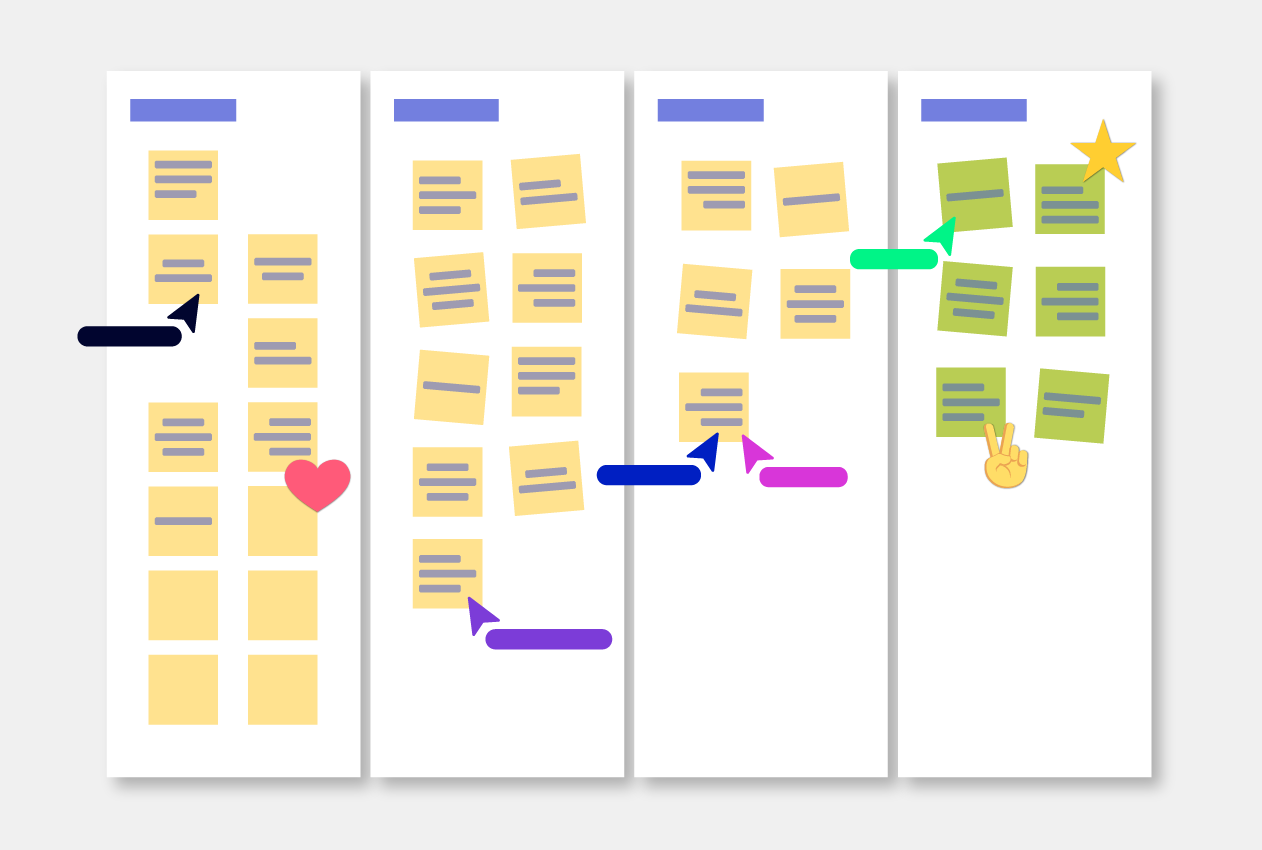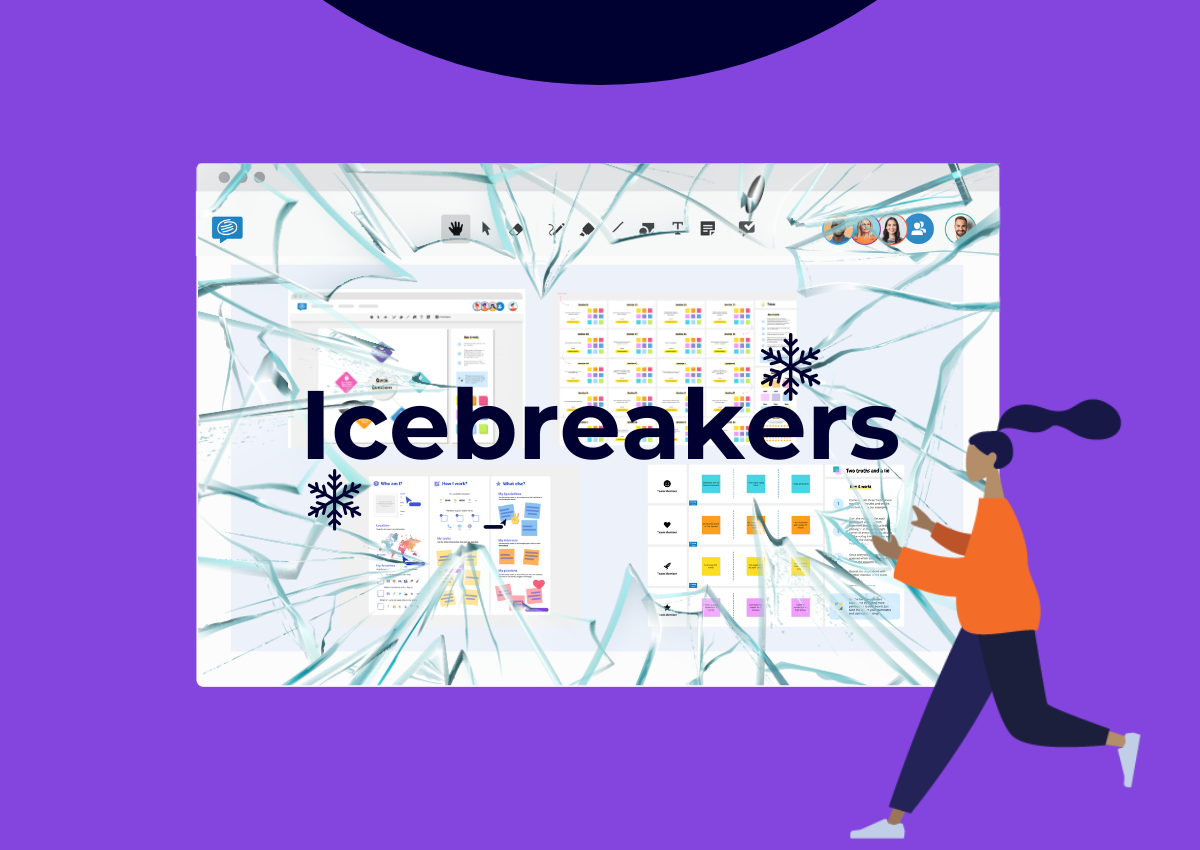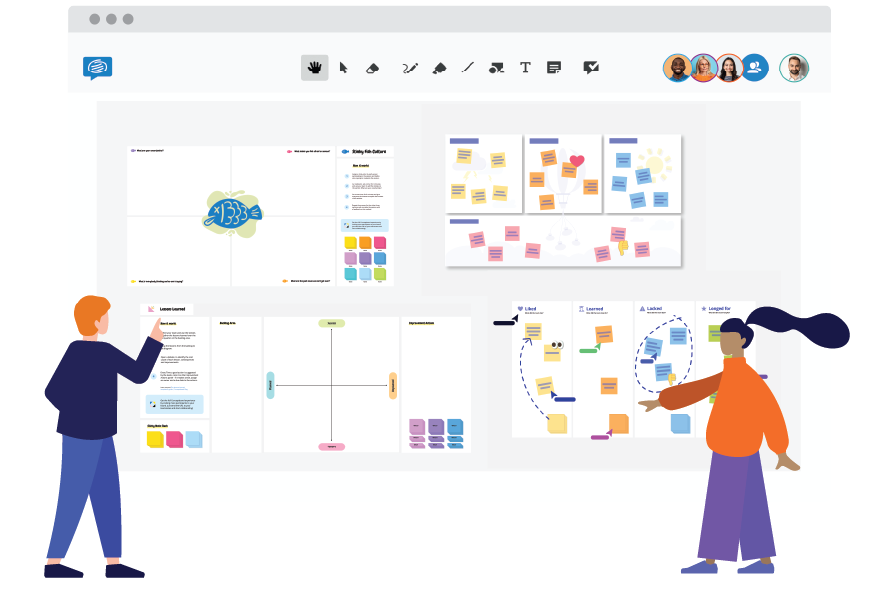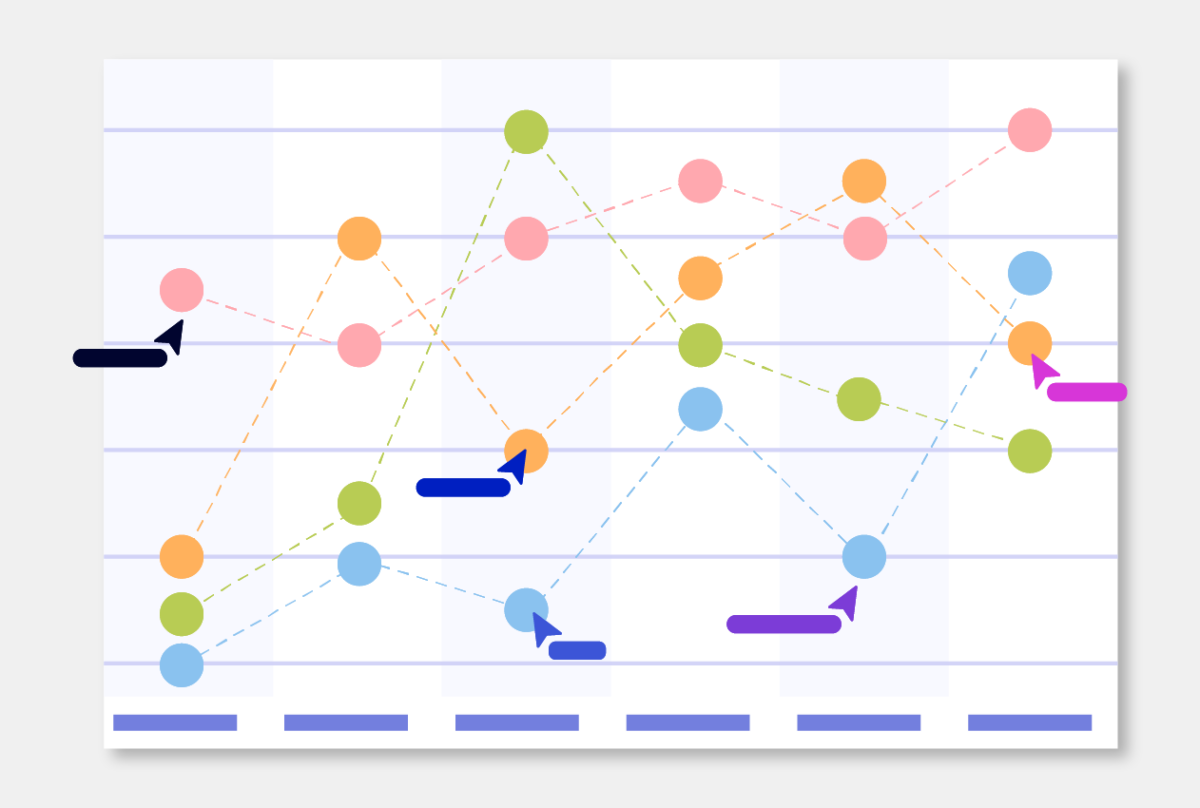This post is also available in: German
Kanban is a simple project management system that helps teams implement agile methods in a flexible way.
Kanban originated in Toyota car manufacturing plants in Japan in the 1940s. The system was put in place to better align their huge inventory levels to actual consumption patterns. This workflow created significant efficiency gains in inventory management by decreasing the amount of excess stock it must hold at any given time.
The principles of Kanban have been applied to the Kanban board, which has become a popular agile project management tool designed to help visualize work, limit work-in-progress, and maximize efficiency. Use our free and collaborative Kanban board template to streamline your projects, visualize dependencies and visually track progress. Easily share the template with your remote team and collaborate both in real-time and asynchronously.
Get started with a Kanban board template
If your team is ready to explore agile principles, a Kanban board is a great place to start. By implementing a Kanban method, you can experience benefits such as improved transparency, simplified reporting, improved effectiveness and better teamwork.
We’ve done the hard work for you and designed an easy-to-use Kanban template that’s completely editable. We’ve also created a step-by-step guide to help you collaboratively work on the template with your remote team.
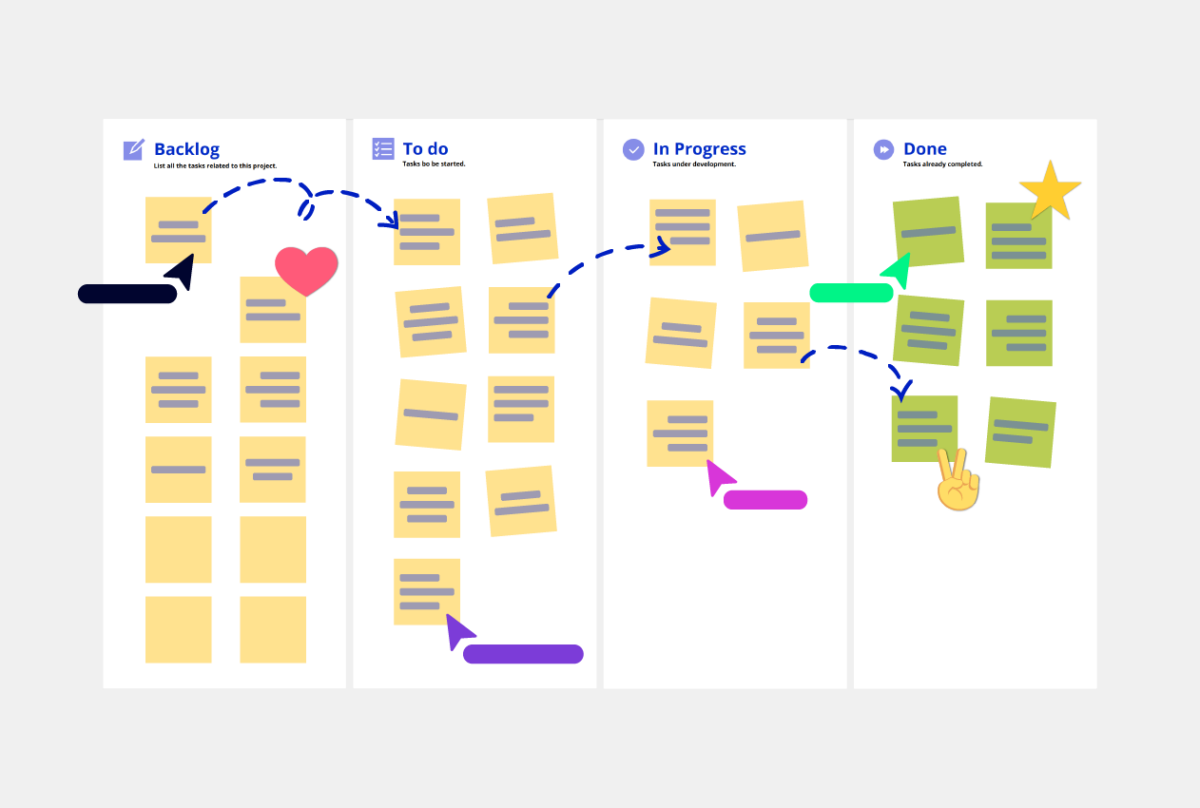
4 Tips for setting up your online Kanban boards
While some teams still prefer physical Kanban boards over virtual ones, most organizations are realising the benefits of shifting to an online board. The online board takes the key features of the physical board with the added benefits of accessibility, scalability, and longevity.
Here are our top four tips for setting up an online board.
Start collaborating visually today!
1. It’s all about the team
Kanban is a team process, so the first thing to do is set up a time to introduce your team to the new online board. Then you can work together to figure out how and when new work gets added to the board, what size project should go on one card, and how often new tasks can be added.
2. Go beyond sticky notes
Though a traditional Kanban board only uses digital sticky notes, in Conceptboard you can really enhance your Kanban board by adding other useful content related to the tasks. This may include tables or charts, images, documents or embedded videos. These visual details are displayed in a single place, minimizing the time spent tracking down progress reports or searching through folders for relevant information.
3. Use a colour code
You can use sticky note colours to differentiate the type of work (e.g: blue for user story and red for defect), or use colours to show priority level (e.g: red for urgent, green for normal).
Visual indicators, such as user avatars, can be added next to sticky notes to show who is assigned to that task or other important details that are relevant to your team’s work. You have the freedom to decide what your board looks like and how to best represent your work.
4. Set access roles
In Conceptboard, all participants can collaborate together and make changes in real-time to the board. You can also set access roles according to who is viewing the board.
Contributing team members can be set as Editors, thus make changes and edits to the board. External stakeholders or members of your organization can be set as Viewers, so they can view, but not contribute to the board.
Example of a Kanban board template
Kanban boards are designed to visually map out process steps in projects that are often invisible or intangible, such as software development. This provides structure and a much needed visibility into many aspects of the work, including how the work flows.

The simplest Kanban board consists of just 3 columns: To Do, Doing and Done, and work flows from left to right. By dividing the workflow into these three sections, you’re already streamlining your work. Kanban cards (usually sticky-notes) are then placed on the board in the lanes that indicate the status of the work.
What are the benefits of a Kanban board for remote teams?
According to a study conducted by the Project Management Institute, 71% of organizations are using agile principles at some point in their work.
Agile teams take advantage of Kanban principles by matching the amount of work in progress to the team’s capacity. This gives teams flexibility around priorities, faster output, clearer focus, and transparency throughout the development cycle. This is especially true for remote and distributed agile teams. It also reduces the amount of multi-tasking as teams only have a set number of projects on the go at any one time, producing more streamlined work even when working across timezones.
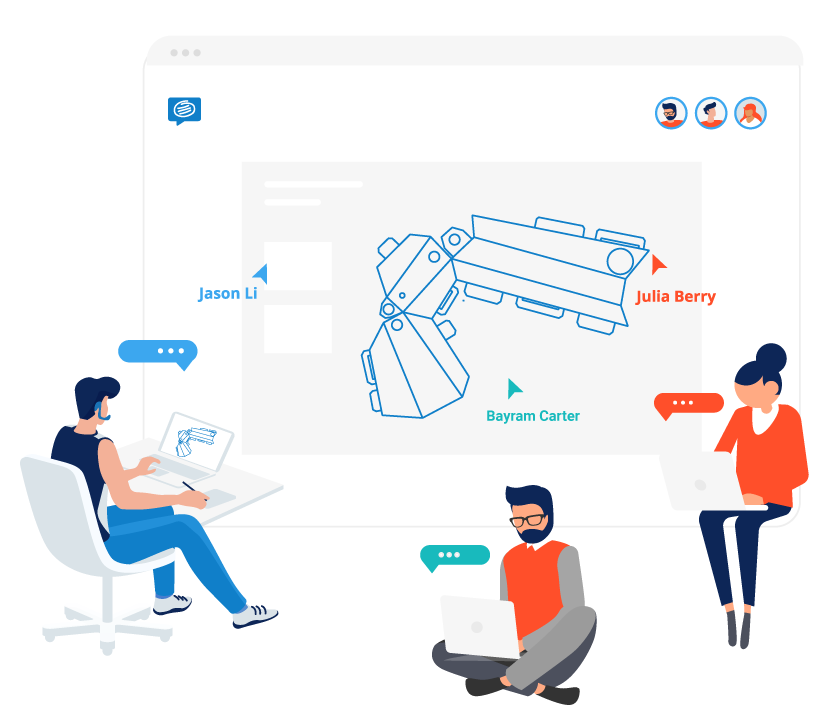
The online whiteboard built for agile teams
If you’d like to read out more about Kanban or other project management templates such as a Gantt chart template or a agile sprint planning template, we’ve got plenty more on our blog.

